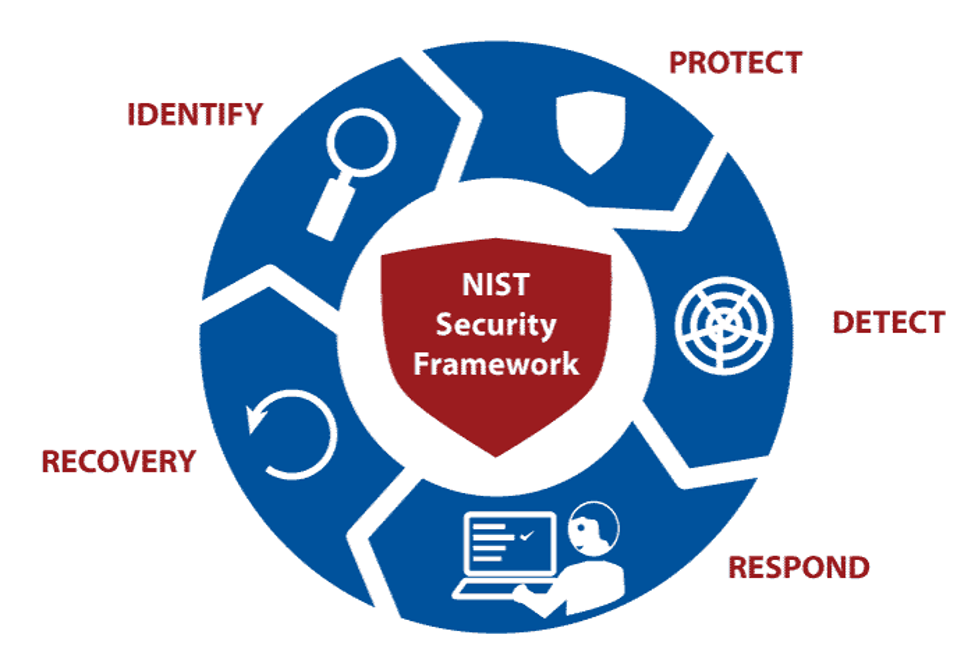The National Institute of Standard and Technology (NIST) falls under the umbrella of the United States Department of Commerce and is headquartered in Gaithersburg, Maryland, USA. The basic purpose of this governmental department is to create standards and to perfect measurements for businesses to use as their metrics during trade and commerce. This department has been given the task of creating measurement and metrics for a variety of industries since the onset of the 20th century. Since then, technologies have evolved quite a bit, and more recently digital technology has become the main subject of concern.
NIST released its first version of the Cyber Security Framework (CSF) in 2014 under the directives of President Obama in an attempt to tighten security measures taken by SME’s in order to secure company and client data. Moreover, the CSF serves as a simple protocol that can be understood and implemented by all levels of the organization to mitigate security risks and enhance digital security.
According to surveys, 30 percent of US-based organizations are implementing the Cybersecurity Framework and this figure is expected to rise to over 50 percent by the end of 2020.
The Cybersecurity Framework makes it possible for companies both from the private and public sectors to efficiently evaluate their digital environment and highlight potential threats, vulnerabilities, and impacts of their setup. The NIST Cybersecurity Framework is a completely voluntary framework that people implement by their own preference, it is not a requirement by law, however, there are several benefits to managing digital security according to this framework.
Moreover, with this framework organizations can better understand how they should manage their position. Sometimes an off-the-shelf solution is not enough and organizations need to consider getting some tailor-made solutions that can manage their specific needs. Through this Framework, businesses can more rapidly reach the root causes of an attack or a disturbance and quickly make adjustments and improvements to make sure that doesn't happen again in the future.
Moreover, because the NIST framework is a comprehensive protocol that can be easily applied by all kinds of businesses, it helps ensure safety across the entire supply chain. In the past, and today, a data breach is generally made at the weakest link of the supply chain, even though other members of the supply chain may have good security, their data and information are also compromised due to the breach.
Another important point related to securing the entire supply chain is that with a uniform security protocol every person has more control over how sensitive data is protected even after it is of their possession. Two companies who are both using the NIST standards, will not only handle their own information according to protocol but third-party data will also be managed with the same systems. Hence, organizations can choose to work only with those businesses who adhere to certain security protocols.
This is also a very functional way of managing security for organizations as there is a set protocol that everyone has to follow. Rather than having a customized or tailor-made security setup which is difficult to audit and is under the control of whoever manages that system, unless everyone is trained to manage that system. The standardized security system is something a new person can easily come on board and learn, and system-qualified IT security professionals are also easier to hire.
Lastly, the framework also makes it possible to effectively manage a security incident if it does occur. It clearly outlines measures that should be taken to detect, contain, and report a cyber-security incident if it does occur.
The framework is a very in-depth and detailed security solution and not every measure has to be or should be, implemented by every business. Rather organizations only need to make use of those actions that best suit their needs.



 714-333-9620
714-333-9620